The key to controlling bamboo spread lies with an approach that tackles the bamboo rhizomes. There really are only two alternatives, remove the rhizomes to stop bamboo spreading, or employ a solution that will act as a bamboo block. If the latter is chosen, a decision will need to be made on how to stop bamboo roots spreading. The most practical method for this is the installation of a specialist bamboo barrier.
How to block bamboo
Bamboo is an incredible plant. Fast growing*, the largest member of the grass family**, tough as steel, edible (by Pandas at least) and beautiful. However, if you put the wrong kind of bamboo into a residential garden it can be a recipe for disaster.
There are two types of bamboo: clump forming and running. As you can guess, clump forming pretty much stays put, whereas running bamboo will run. It’s important to understand how to stop bamboo spreading, because left unchecked, running bamboo will spread all over your garden and your neighbour’s garden. This type of scenario does not do much for your popularity. Thankfully, there are bamboo root barrier solutions to hand, whether you’re planting bamboo from scratch or dealing with an established bamboo that’s running riot.
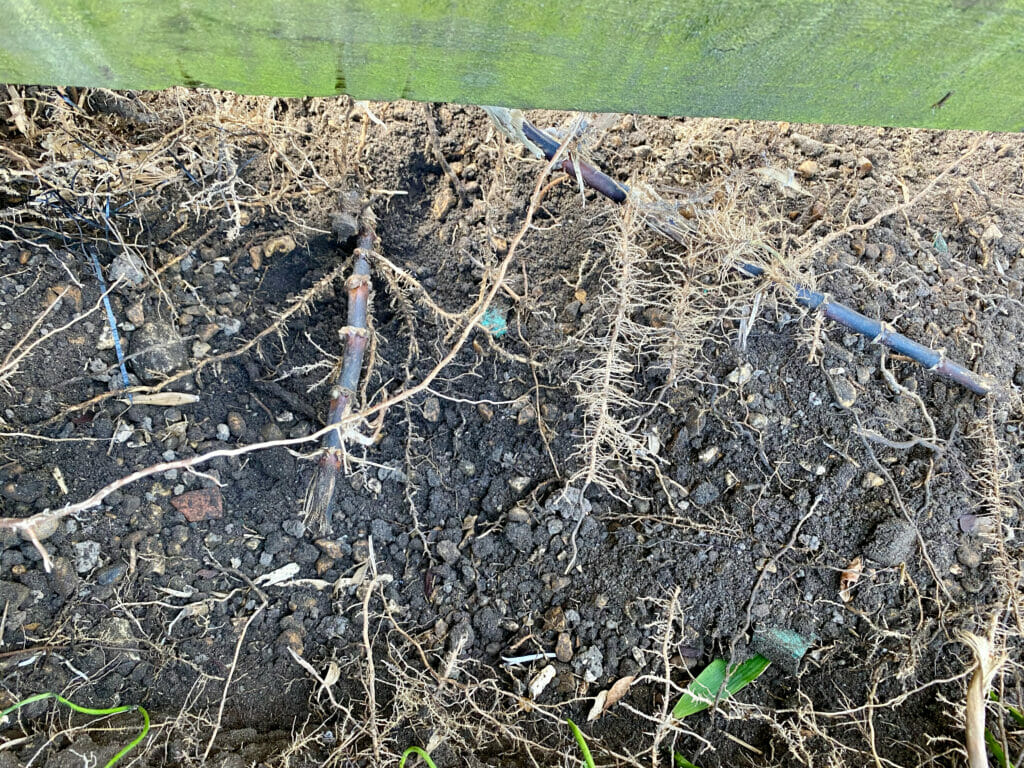
Bamboo roots and rhizome spreading under a garden fence
Seeking a solution to stop the spread of bamboo roots in your garden, is somewhat of a misnomer. The real issue lies with the blocking the lateral spread of bamboo rhizomes, and this is best done by constructing a barrier, or purchasing and installing a bamboo barrier. The second option typically provides the more practical and affordable solution, with specialist materials suitable for homeowners to install themselves or, if preferred, by professionals.
How does bamboo spread?
Bamboo spreads by sending out rhizomes (underground stems) from the main body of the plant. These can grow very quickly under the right conditions, creating new shoots many metres away from the parent plant. Fortunately, most bamboo rhizomes tend to sit in the top 30 cm of topsoil, reducing the effort it takes to get at the bulk of the migrating shoots.
Bamboo roots
When discussing bamboo roots, it is essential to clarify that the term is often used colloquially to refer to bamboo rhizomes. Technically, however, bamboo roots and rhizomes are distinct structures.
The roots of bamboo are thin tendrils that extend into the soil, typically but not exclusively emerging from the nodes of the rhizomes. The delicate, fibrous roots primarily grow downward, seeking water and nutrients from the soil to sustain the bamboo’s growth and health.
Understanding the difference between roots and rhizomes is crucial for effective bamboo management and containment measures.
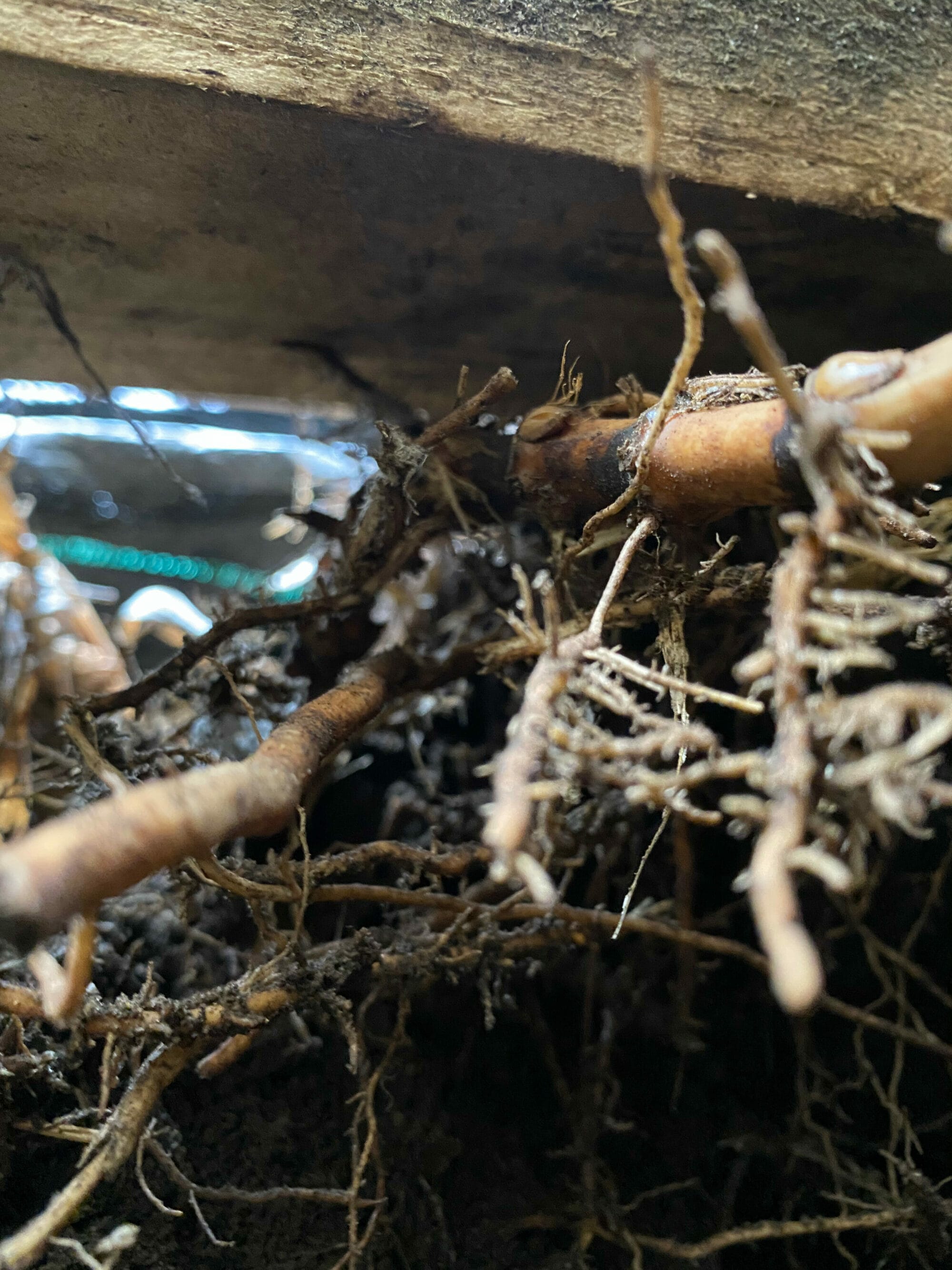
Bamboo roots and rhizome extending from under a fence
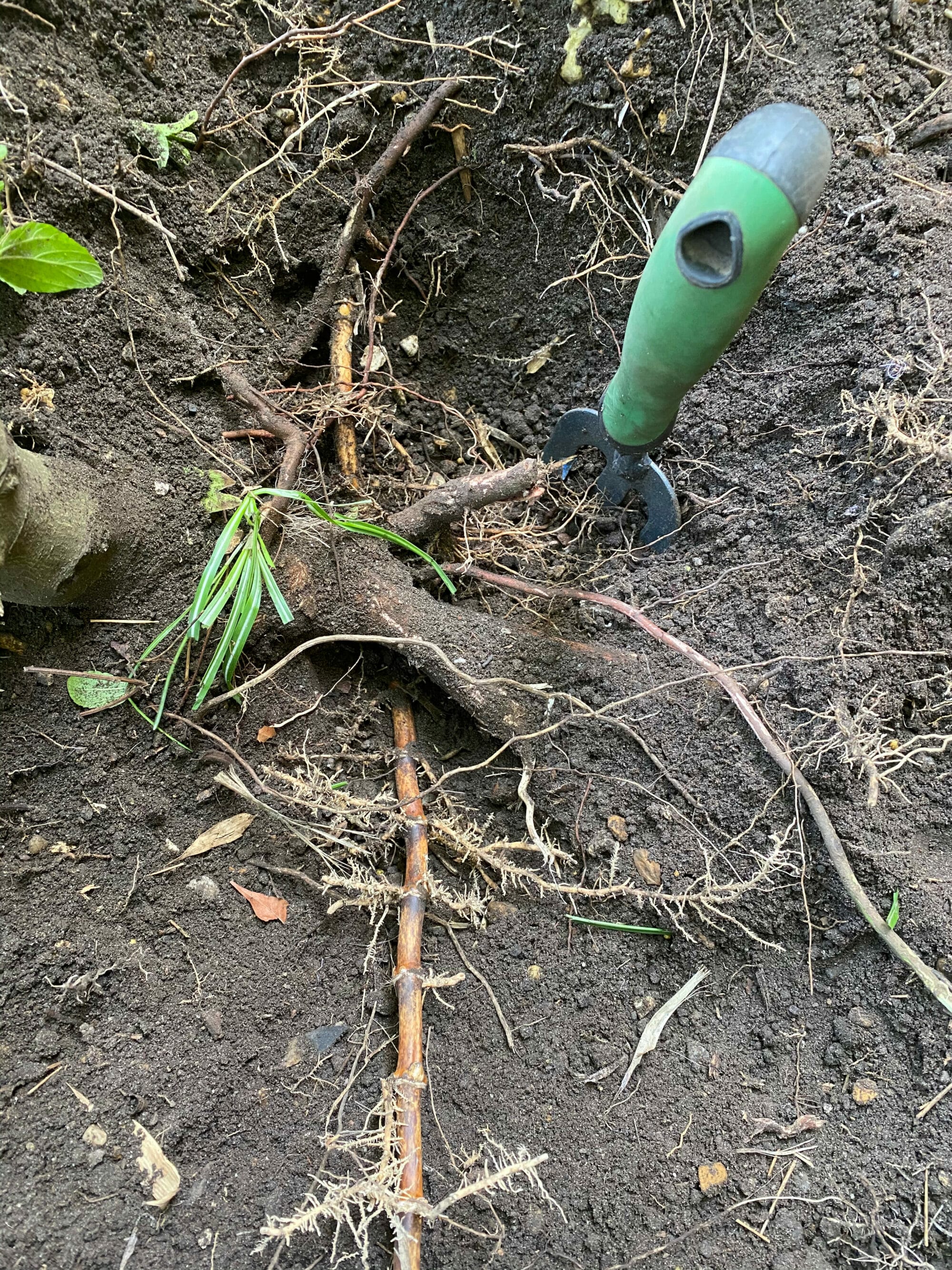
Running bamboo roots and rhizome
It’s a common misconception that all parts of the bamboo underground are invasive and can regrow. However, only the rhizomes are capable of regeneration, while the fibrous roots that extend off them cannot regrow on their own. Therefore, removing bamboo is made much easier when you know that you only need to get rid of the typically tough and ribbed rhizome, leaving the fibrous bamboo roots that don’t regrow behind.
How deep are bamboo roots?
The depth of bamboo roots can vary depending on the bamboo species, soil conditions, and the plant’s age. Typically, bamboo roots are considered shallow-rooted compared to many other plant types. The root system can extend to a depth of about 2 to 3 feet (approximately 60 to 90 cm). However, bamboo typically roots to only 30-40 cm. The running varieties, particularly those with rhizome that extends a long distance, will be very shallow – within the first 10 cm of soil.
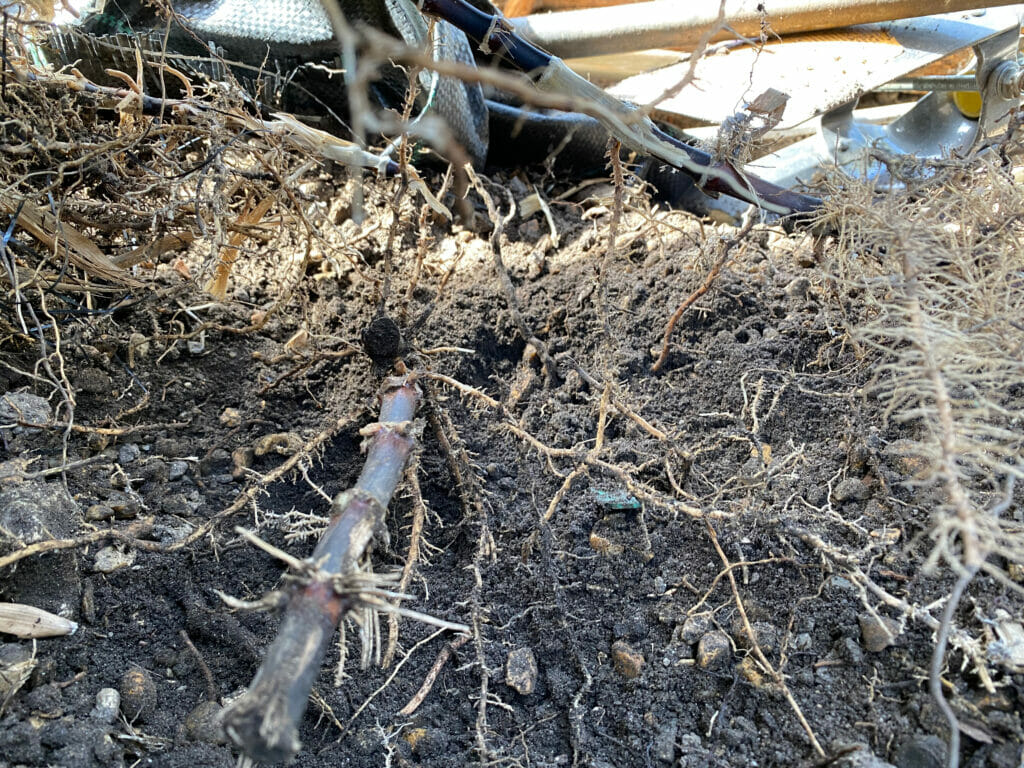
How deep bamboo roots and rhizome typically go
Learn how to stop bamboo spreading using root barrier
The best way to prevent the spread of bamboo is by controlling its rhizomes rather than its roots. The rhizomes the invasive part of the plant. For new bamboo plants, it’s always wise to consider containing them. An appropriate bamboo barrier, like FlexiRoot HDPE root barrier, can be used to contain the rhizomes of a new planting.
Use the barrier to form a complete ring around the plant; the bamboo barrier depth should be a minimum of 50-60cm. You will need to trim or cut runners that extend past the line of the root barrier with a spade or knife. Then, dig/pull out every bit of the cut sections.
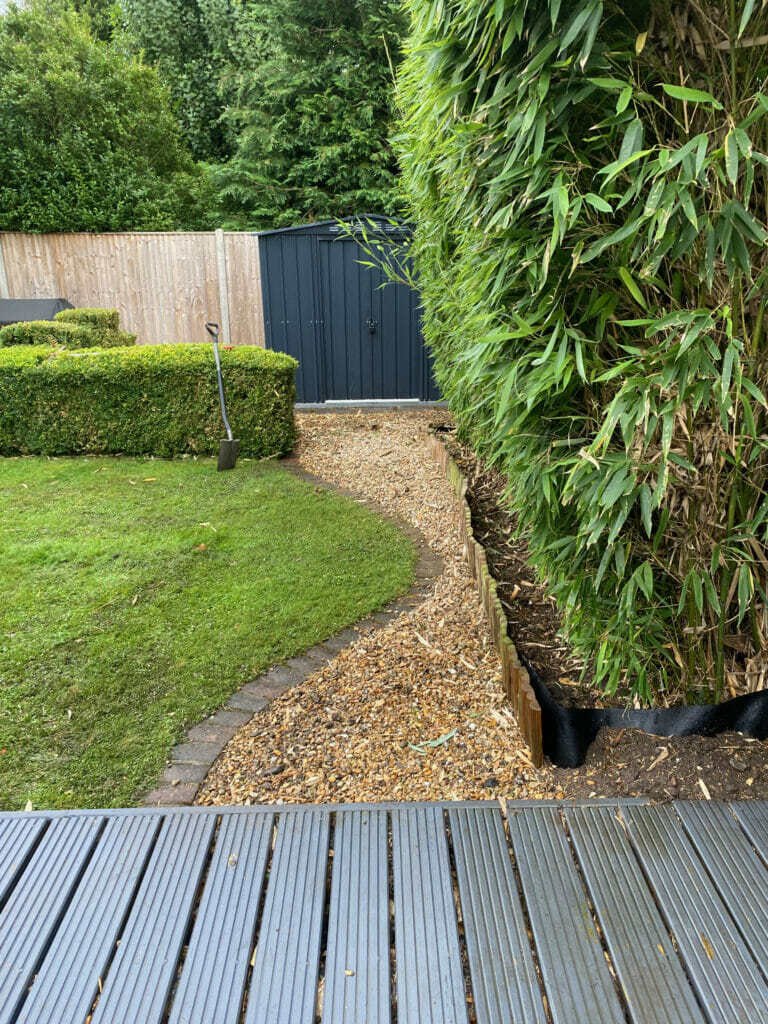
Preventing bamboo spread using barrier
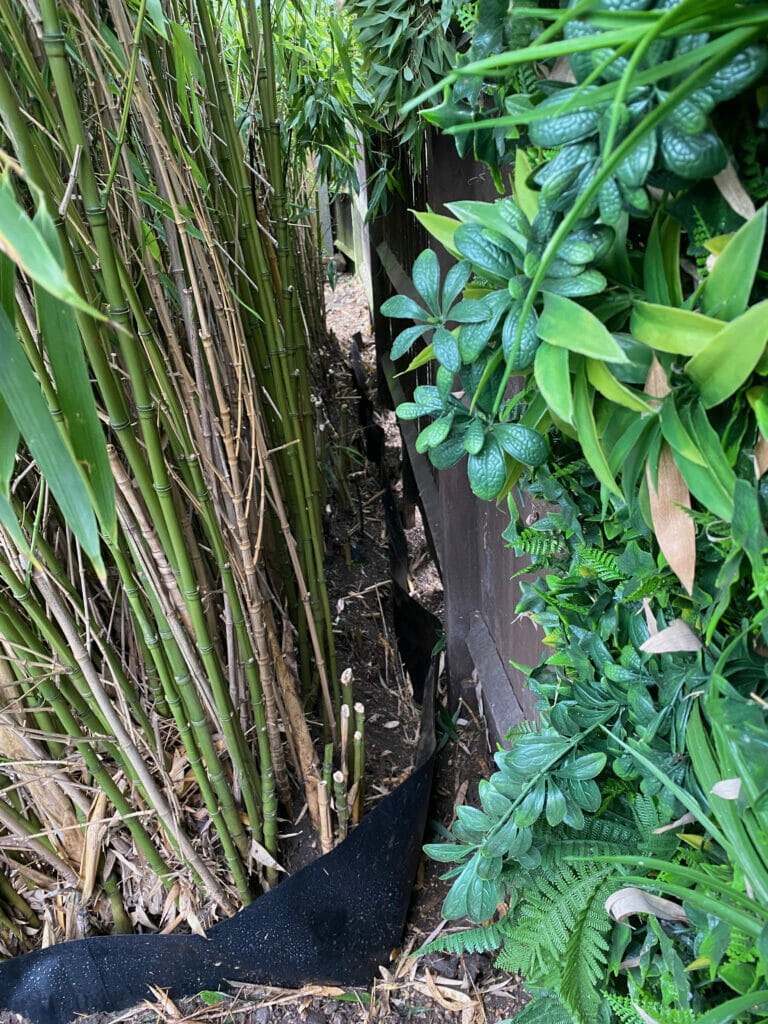
Controlling the spread of bamboo from a desired area
The top edge of the barrier itself needs to stand above ground level by around 10-15 cm. If desired, a layer of bark mulch can be used to hide the visible bamboo root barrier. FlexiRoot HDPE root barrier has built-in resistance to damage from sunlight, making it ideal for situations where some of the bamboo root barrier remains exposed after the installation.
Once barrier is installed around a new bamboo plant, or existing bamboo growth (see below), it should be periodically checked. It is best to Inspect the bamboo barrier annually for shallow bamboo runners attempting to grow over the barrier. These need to be cut back as soon as they are discovered.
Dealing with bamboo that has already spread
If you’re already facing a runaway rhizome scenario, with bamboo shoots in places they shouldn’t be, you’ll face a slightly harder task. Full containment is advised, using a bamboo root barrier – not weed mat! Dig a trench all the way around the bamboo stand (to at least 50-60 cm) then, after removing all the bits of rhizome you find, the barrier can be installed.
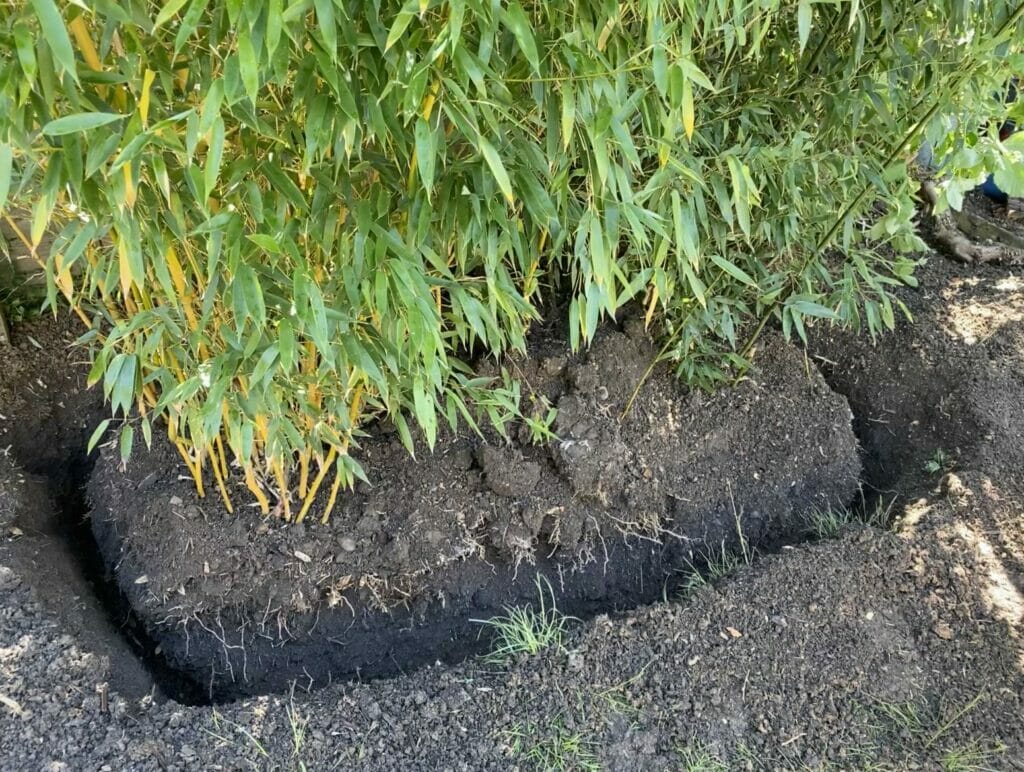
A trench cut in preparation for bamboo barrier
The trench should then be backfilled with the barrier protruding above the ground. Inspect the barrier annually, as part of your garden maintenance.
Controlling bamboo spread by removal
Cutting back and removing the rhizomes can be a laborious process that requires a level of physical fitness. However, even after using various tools such as spades, crowbars, and knives, you may still fail to remove them all. Bamboo rhizome is tenacious and will often hide under shed bases and around concrete footings. It can even be found entwined into the roots of trees, making it near impossible to remove every piece.
If you can’t get all the bamboo rhizome out in one go, don’t despair! You will, however, need a plan for dealing with trapped rhizome and fragments that have been left behind.
In the short term, keep an eye out for regrowth from any remaining rhizomes after trimming. Some can be expected from the fragments which can’t easily be removed or treated.
Dealing with trapped bamboo roots and rhizome
Where rhizomes have established themselves under paving, shed bases or other hard landscaping, it is sensible to trim the rhizome back to the hard landscape. In doing this, which is preferable to removing the structure, some regrowth can be anticipated. However, once sufficiently grown, any fresh bamboo growth can be treated with herbicide, so that ultimately it is killed off.
Determining the amount of bamboo rhizomes that can remain, to be followed by by herbicide treatment that will be viable, requires some technical expertise. As does, the application of professional-grade herbicides. This is where an invasive weed specialist comes in. They can determine how to deal with the spread of bamboo without unnecessarily destroying hard landscape features.
Careful planning and management are necessary when growing bamboo. This is important to prevent its unchecked spread into unwanted areas. If you need help to stop bamboo spreading in your garden, call our team on 0203 174 2187 or 01202 816134 and they can advise on solutions.
* The world record for the fastest growing plant belongs to a bamboo, which has been found to grow at up to 91 cm per day. If that bamboo was driving a car, it would be doing 0.00002 mph. Not bad for a plant.
**According to the RHS Dictionary of Gardening, the tallest bamboo recorded to date was found in the tropics at a height of 40 m (130 ft). If you were sitting at the top of London Eye, you’d be eye to eye with the top of the stems!




